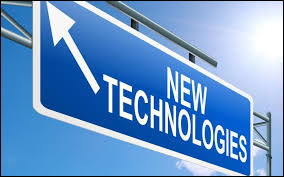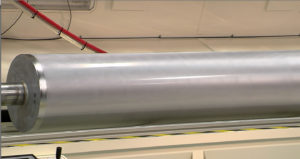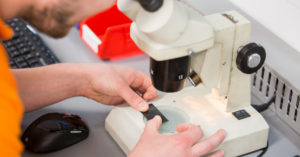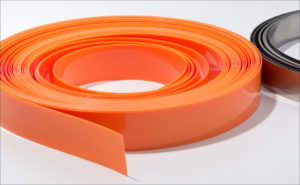 As a consumables manufacturer introducing new doctor blade technology to a mature industry, we’re constantly hearing, “But I’ve done it this way forever.” Press men are busy and don’t’ have time to waste trying new products when their current ones are working fine. But changing times call for an ongoing evaluation of your print process to find ways to improve. Today’s printers are smart to run controlled tests of new products to make sure they are maximizing efficiency and profitability and “keeping up with the times.”
As a consumables manufacturer introducing new doctor blade technology to a mature industry, we’re constantly hearing, “But I’ve done it this way forever.” Press men are busy and don’t’ have time to waste trying new products when their current ones are working fine. But changing times call for an ongoing evaluation of your print process to find ways to improve. Today’s printers are smart to run controlled tests of new products to make sure they are maximizing efficiency and profitability and “keeping up with the times.”
Anilox Roll Evolution
Chrome anilox rolls
Let’s use anilox rolls as an analogy. When chrome-plated anilox rolls came on the market almost 80 years ago, they were an improvement over the previous (and crude) methods of ink transfer. Steel rolls were covered with a chrome layer and mechanically engraved using a knurling tool. The dimples or “cells” filled with a precise volume of ink and carried them to the plate. This gave the printer more control over the ink application process and better print quality.

As the industry continued to evolve, however, the limitations of chrome-plated rolls became apparent. The chrome surfaces wore down quickly from the friction between the roll and the doctor blade. Due to their shape, the cells quickly lost volume capacity and print densities declined. Also, the maximum line screens that could be achieved with the knurling tool were 500 lpi which was only enough for basic and moderate graphics reproduction. As demands for higher quality printing increased, and there were advancements in presses, plates and inks, so did the need for better anilox roll technology.
Ceramic-coated rolls
To keep pace with the industry, anilox roll manufacturers began applying a ceramic coating to their rolls using a plasma spray device. These new surfaces had hardness of over 1400 Vickers compared to 850-900 Vickers for the chrome-plated surfaces. As the hardness of the roll determines its strength and durability, the new surfaces had better resistance to wear from the doctor blade. These rolls were too hard to engrave mechanically and lasers started being used to etch the rolls. The lasers produced a consistent engraving with cleaner cells and more distinct cell walls. Higher line screens could be achieved to expand a printer’s graphics capabilities. The ceramic surfaces not only lasted longer but the cells were also less sensitive to volume changes from wear. Printers gained more control over print quality and were now able to achieve target ink densities with thinner ink films.
New doctor blade technology
 Like presses and other press components, doctor blades have evolved to adapt to the market. Blade manufacturers are continually experimenting with new materials and edge designs and introducing new doctor blade technology to keep up with their customers’ needs.
Like presses and other press components, doctor blades have evolved to adapt to the market. Blade manufacturers are continually experimenting with new materials and edge designs and introducing new doctor blade technology to keep up with their customers’ needs.
Steel
Today’s steel blade users have a choice of carbon, stainless, long life, coated and ceramic blades to fit their precise applications. Until now, steel was considered the only material capable of achieving a fine contact area with the roll and producing an effective wipe on high line screen engravings. Printers had to accept the downside of frequent blade changes, injuries and anilox roll scoring because there were no alternatives.
Plastics
Plastics, on the other hand, have always been known for their blade life and safety. The material has to be thicker to provide rigidity and these blades were suitable only for producing low-moderate graphics. The upside is that they don’t have to be changed as often, and the long and steady wear period allows for consistent ink film thickness for the duration of the print job. The material is also safer to handle and won’t score anilox rolls. Plastic doctor blade choices include a variety of acetals, UHMWs, and polyesters.
Next generation doctor blades
Flexo Concepts® recently introduced a new blade that acts as a hybrid between steel and plastic. A combination of an advanced polymer material and an innovative tip design called “MicroTip™” allows the blade to perform in high line screen applications where previous non-metallic materials were not an option. Printers using these advanced polymer products get blades that can produce the graphics quality of steel while remaining safe to operators and anilox rolls. The blade is now successfully being used in a range of narrow web and wide web applications.
As with anilox rolls and other press components, new doctor blade technology has gone hand in hand with the evolution of the flexo printing industry. The new polymer MicroTip blade is an example of a product that, once again, improves upon “what you were using before.” Why not try it?

